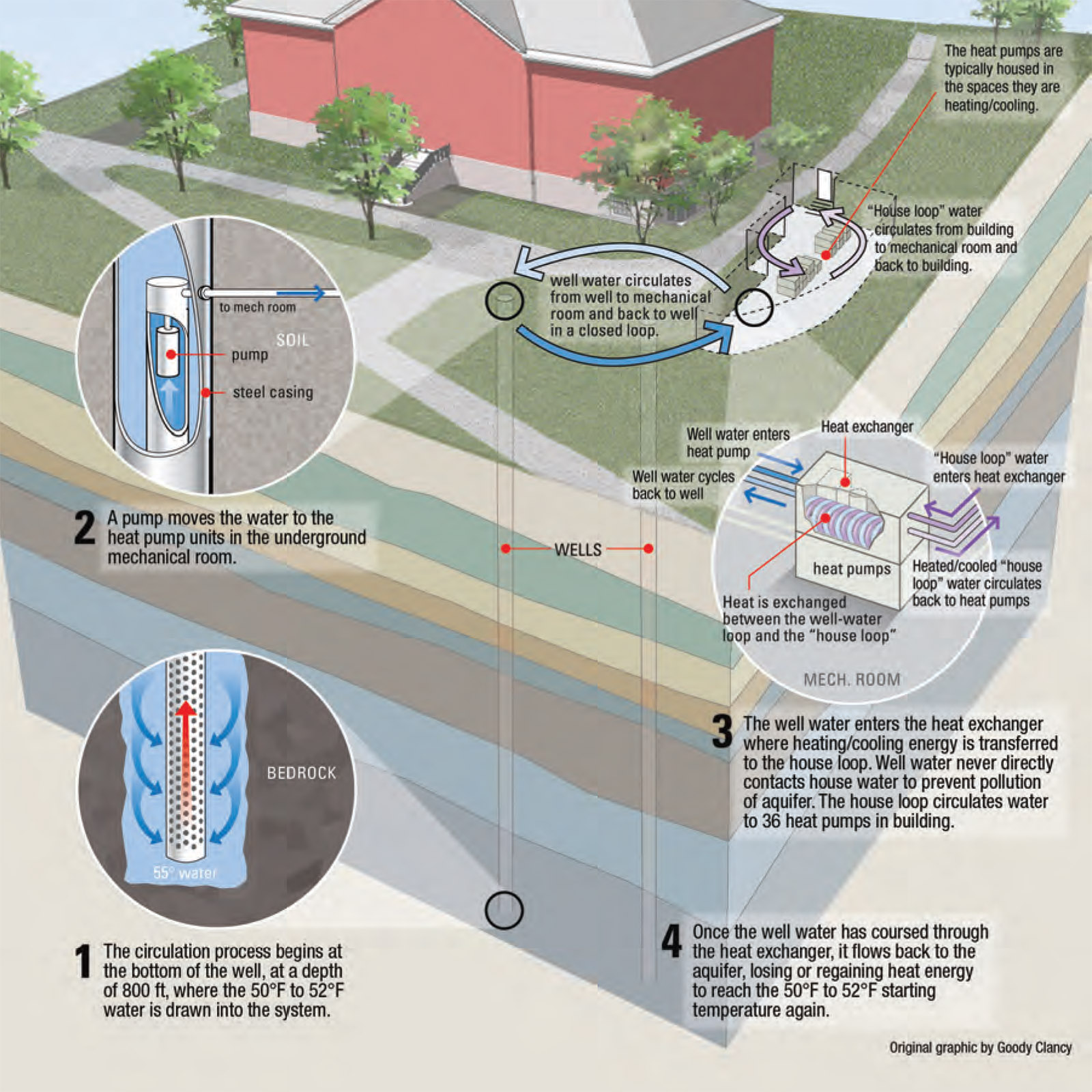Geothermal Heating & Cooling
We harness the earth's temperature using efficient geothermal heating and cooling systems in several of our Champlain campus buildings.
Did you know?
Several buildings at Champlain College are heated and cooled by a geothermal system, also known as ground sourced heat pumps.
Current buildings include: Perry, Butler, Valcour, Juniper, Bader, Whiting, CCM, and McDonald totaling 229,904 gross square feet.
How does it work?
The geothermal heat pump system uses the earth as the energy source. The earth’s steady temperature provides extremely efficient heating in winter and cooling in summer. This mitigates electric costs compared to alternative electrically-based systems and is a sustainable alternative to fossil fuels.
The geothermal system operates using interconnected systems. The first is a groundwater system, consisting of a source well and an injection well. The wells are connected to a natural underground aquifer, which provides the thermal mass that creates the water base temperature for the system—of about 50°F to 53°F.
The water that cycles into the pumps is on a separate closed-loop system that transfers heat directly through a highly efficient plate and frame heat exchanger. The two circulated fluids never come in contact to prevent aquifer contamination.
Perry Hall, for example, contains 37 heat pumps to transfer energy throughout the building. One side of the building can be cooled while the other side is heated, which is helpful on a sunny winter day when one side is heated by the sun and the ambient temperature cools the other side. This ability to transfer energy throughout the building allows for an extremely efficient operation.
Learn more about geothermal usage on campuses across the country, including Champlain College, in the NWF Guide, Going Underground on Campus.
